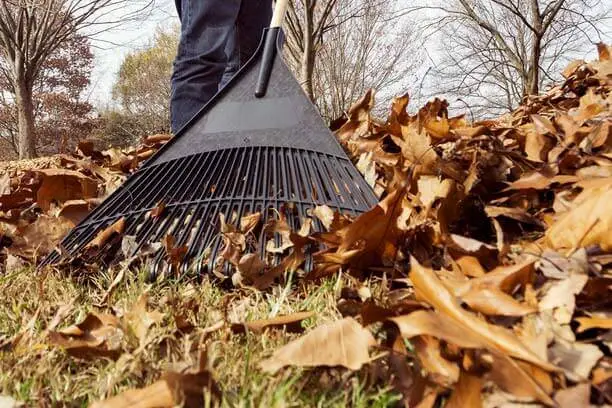7 Uses for Fallen Leaves


With autumn comes brightly colored leaves on your trees. But those leaves will eventually turn brown and fall from the trees, scattering clumps of foliage across your lawn. After you rake them into piles (and jump into them, and then rake them again), what do you do with them?
You might be tempted to rid yourself of the mess. But actually, those leaves can be quite useful. If you learn how to use leaves as mulch, you can provide nutrients to flower beds, lawns, gardens and other landscaping efforts — plus, they can make springtime yard work less daunting.
Repurposing leaves involves sustainable gardening and greenscaping methods recommended by the Environmental Protection Agency (EPA), so you can rest assured that you’re doing something beneficial for the environment and for your yard.
If you’re looking to learn how to make mulch from leaves this year, or planning to start your own leaf compost bin, then here are more tips for your fall lawn care to-do list.
If you have a treed lot, you don’t need to spend cash on mulch bags at your local garden center. Instead, commit to sustainable gardening. Leaf mulch can do double duty, both protecting and nourishing your perennial beds and winter veggie plantings.
To create leaf mulch beds, use your leaf blower or mower’s mulching function and bag attachment to collect the debris. Then spread it around flower beds, over areas where you’ve planted spring bulbs or in the garden around root vegetables and other cool-weather crops.
If you don’t have a leaf blower or a mulching mower, you can still get to work with a rake and add a light layer as insulation to your decorative beds. Come spring, you’ll be glad you did.
Fall can be busy. So if you’re short on time for fall chores, just run the lawnmower over the leaves once or twice. Let the resulting leaf shreds and lawn clippings serve as a natural rich fertilizer and weed control for your yard. When winter turns into spring, you’ll enjoy a lush, green expanse next year.
In the fall, you might be planting cold-weather vegetables, like carrots, leeks and beets. They need insulation from the coming freezing temperatures.
If you have leaves, you’re in luck: They’re perfect for insulating these root crops. Not only do the leaves help keep the crops warm when temperatures drop, but they also add a layer of protection against snow and other winter weather.
Gather a bundle of leaves — whole, not shredded — and spread them across the top of your crops. If the leaf layer isn’t too thick, you can keep them here to decompose until spring.
Dropped leaves make great brown matter for your compost bin. For this, shredded leaves work best. You’ll need nitrogen-rich green matter to help break down the pile — try fruit and veggie waste, coffee grounds, crushed eggshells and other kitchen refuse for that.
For an even speedier process, add manure. Layer materials together and turn your compost mixture with a shovel or other implement often. After a while, you’ll have a rich, nutrient-dense compost to feed your plants.
Trees pull valuable minerals from the ground and deposit a portion of those nutrients in their leaves. That’s why newly fallen leaves make such a great soil amendment.
Fall is a great time to plan out new flower bed projects or replenish vegetable gardens for spring planting. So it’s also the right time to get out that tiller. Add a layer of leaves and any other soil amendments to your beds and till right in.
Leaf mold is simply decomposed leaves that benefit yard maintenance. The matter can be added to your planting beds, garden or decorative pots to help retain moisture and reduce watering.
Making leaf mold can take some time, but it’s pretty easy and doesn’t require much work on your part. Rake leaves into a pile in your yard and then let nature do the work over the course of a year or more. Just keep it moist and turn it over every few weeks. Enclose the pile with staked-up chicken wire or landscape fabric if you’re worried about wind scattering your stash.
One of the more surprising uses for fallen leaves is protection from predators and inclement weather for critters like bees, butterflies and moths. Butterflies and moths lay their eggs on the underside of fallen leaves and find shelter under leaf cover when the season gets colder; mated queen bumble bees burrow in the ground to hibernate, relying on leaves and twigs to keep their nesting sites warm.
Protecting creatures like these helps keep the ecosystem healthy and alive, and in turn will keep crops healthy. For you, it means minimal lawn care in the fall — for pollinators, it means maintaining a crucial ecosystem. Everybody wins!
You take pride in your home and yard. Contact Farm Bureau to make sure you have the right homeowners coverage.